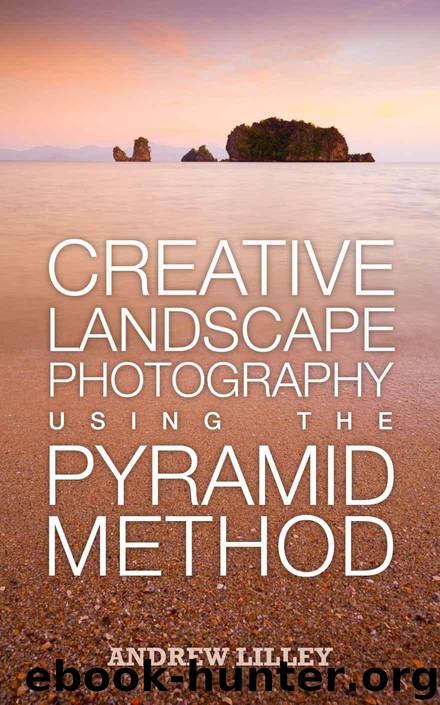Creative Landscape Photography Using the Pyramid Method by Lilley Andrew

Author:Lilley, Andrew [Lilley, Andrew]
Language: eng
Format: epub
Published: 2015-01-29T22:00:00+00:00
Canon EOS 5D Mk II, EF17–40mm f/4L at 23 mm, Lee ND3.0 10–stop “Big Stopper”, Lee graduated ND0.9 filter, 7.0 sec at f/16, ISO 400
‘Neutral density’ essentially means grey, without any colour tint. ‘Graduated’ means there’s a part of the filter that’s neutral density, and a part that is transparent, with a transition zone between. The transition zone can be ‘soft’ or ‘hard’, depending on the size of the zone.
ND grads are rectangular filters, so the transition zone can be moved up and down, depending on where the sky begins. They can also be angled, if needed, in case there are items like hills or trees on one side.
You mount the filter on a square filter holder, with an adapter made for the lens’s diameter. The filter holder can hold several square filters at a time. The ND grads come in a variety of densities, with 0.3, 0.6 and 0.9 ND filters (1, 2 and 3 stops respectively) being the most common. You should use a higher ND for a large difference in brightness between the sky and ground, and a lower ND for a small difference. You can also combine more than one, if you need to, for an even greater effect.
If you’re photographing a reflection in water, never darken the sky more than the reflection of the sky—it will make it look odd
It is possible to get the same effect an ND grad provides by taking two exposures, one exposed for the ground and one for the sky, and combining them on the computer. However, I find aiming to take two perfect exposures breaks the flow of the photography, and greatly adds to the time needed in post processing.
Square filters (ND grads are actually rectangular to allow up-down movement) are sold by several suppliers, but most professionals prefer those sold by either Lee Filters or Singh Ray. Theirs are handmade and expensive, but the quality is excellent. Other suppliers, such as B+W, Tiffen and Cokin, sell cheaper square filters, with a possible commensurate reduction in quality.
Forgot your graduated ND filters? Hold the camera strap in front of the lens, where the sky is, for part of the exposure! This will let less light through for the sky portion, making it darker. Move it a little to get a smooth gradient
If you don’t already own one or more ND grads, I thoroughly encourage you to do so. You may be surprised at how much they improve your photos, and they are the most cost effective way to creating high quality landscape photos, bar the time-consuming Photoshop work of combining multiple photos of different exposures.
Neutral density standards
Similar to the dark part ND grads, and polarisers, neutral density standard filters reduce the amount of light entering the lens, and therefore increase the exposure time. They are used when the shutter speed would otherwise be too high to achieve the effect you want, such as smooth waterfalls, sea, waves and clouds.
They come in a similar range of densities to ND grads, and also an ND3.
Download
This site does not store any files on its server. We only index and link to content provided by other sites. Please contact the content providers to delete copyright contents if any and email us, we'll remove relevant links or contents immediately.
On Writing A Memoir of the Craft by Stephen King(4670)
The Doodle Revolution by Sunni Brown(4517)
A Simplified Life by Emily Ley(3972)
Mummy Knew by Lisa James(3523)
Marijuana Grower's Handbook by Ed Rosenthal(3519)
Better Homes and Gardens New Cookbook by Better Homes & Gardens(3375)
Paper Parties by Erin Hung(3309)
Figure Drawing for Artists by Steve Huston(3276)
Draw Your Day by Samantha Dion Baker(3129)
The Genius of Japanese Carpentry by Azby Brown(3041)
Japanese Design by Patricia J. Graham(3005)
The Code Book by Simon Singh(2866)
Lions and Lace by Meagan Mckinney(2849)
Dangerous Girls by Haas Abigail(2843)
The Curated Closet by Anuschka Rees(2806)
How to Make Your Own Soap by Sally Hornsey(2746)
The Checklist Manifesto by Atul Gawande(2662)
The Wardrobe Wakeup by Lois Joy Johnson(2641)
Zero to Make by David Lang(2633)
